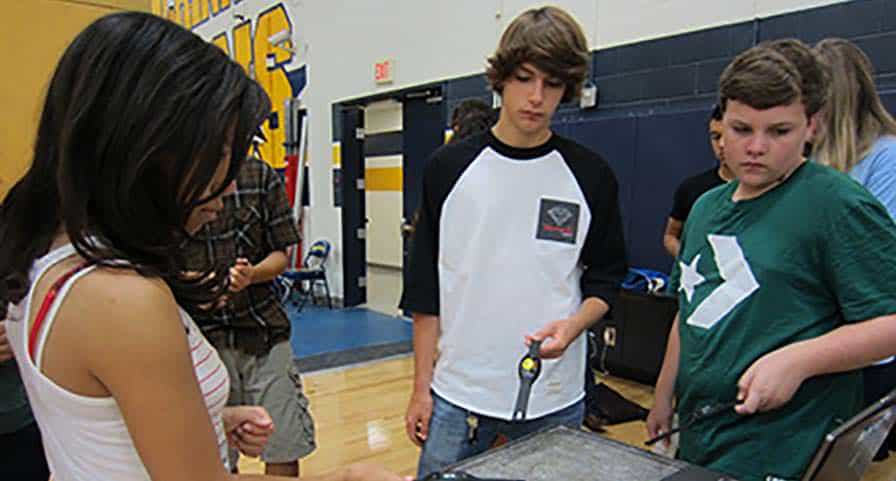As his school year ground toward its inevitable end, John Kruse, a physical education teacher at Nobel Charter Middle School in the Los Angeles Unified School District, scratched his head as he watched his students play pickleball, a cross between tennis, badminton and table tennis.
The scene playing out before him – and on the IHT Spirit System software that tracked the heart rate levels of the 12 students wearing monitors that day — was one he’d seen before, one he had grown tired of. Kruse, the 2016 California Association for Health, Physical Education, Recreation and Dance Teacher of the Year, had hoped that his students would be exercising in their optimal heart rate zone for at least half of the PE period.
“Of the people who were wearing the monitors, only about 40 percent of them were meeting the daily physical activity goal that I had set,” he said. “There was one girl in particular who never met the goal in all the times we’ve used the monitors. She was kind of apathetic and not super-motivated.”Looking for a helping hand
Unwilling to watch another sub-par day, Kruse changed tactics. He looked at his apathetic student’s pickleball partner and asked for some help.
“I was trying to gently suggest that she be more active, and I looked at her partner and said, ‘can you help me out here?’ She knew what I was getting at. ‘So you basically want me to make her run?’”
When Kruse acknowledged the unspoken directive, a funny thing happened to his apathetic student. Her partner started hitting the ball away from her, and she started running from side to side. She chased the ball down time and again. When he checked her workout results on the Spirit System, he smiled.
“It ended up being the first time she’d met the goal,” he said. “I gave her a lot of praise that day, and then the next day I shared that with the class. That day, as a whole, 88 percent of them reached the goal. I shared that with them the following day, and then that day, everyone with the exception of one met the goal.”
All for one, one for all
Kruse can’t say exactly what changed in his student’s mind that day, but positive reinforcement definitely helped.
“The rest of the class heard the story,” he said. “They know how it happened and that I was excited about that. They all seemed to rise to the occasion at that point.”
As for his previously apathetic student, he remains certain of two things: she understood the teacher had an extra set of eyes on her through the monitor she wore; and with an eye on her workout data, she felt like she achieved something when she started meeting her goals.
“She has a big smile on her face now, which is good,” Kruse said. “I think the girl is excited about what she’s learned now.”
Kruse’s also thankful he had two allies in his quest to change a low-performing student’s habits. The aforementioned playing partner who became a de facto personal trainer got the ball rolling, so to speak. The other ally came at home. After a meeting earlier in the year with the parents where he explained that workout results could be viewed at home if parents provided an email address, the girl’s father began getting the information.
“Turns out her dad is a biomedical engineer,” Kruse said. “He was excited about the technology.”
Looking ahead to new year at Nobel
The late-year success energized Kruse. He’s already looking forward to implementing the Spirit System with more purpose in 2016-17. His big challenge: to make the students understand that a 35-minute workout window in PE isn’t enough to meet their daily minimums of physical activity.
“It’s difficult for a PE teacher to give the quantity of exercise a student needs in class alone, so they need to learn that they need to be active outside of class as well,” he said. “I envision, because the IHT software gives an estimate of caloric expenditure, they can compare what they’re getting in PE class to what’s recommended and do something about it.”
If last week is any indication, they already are.


